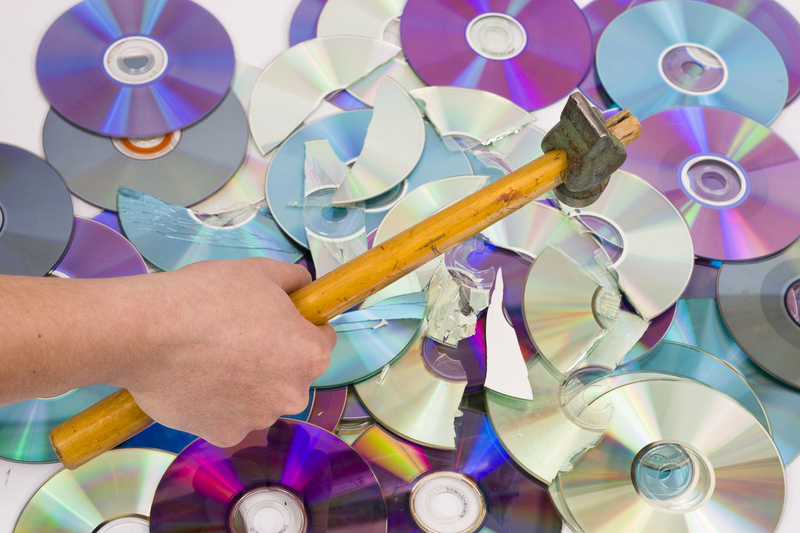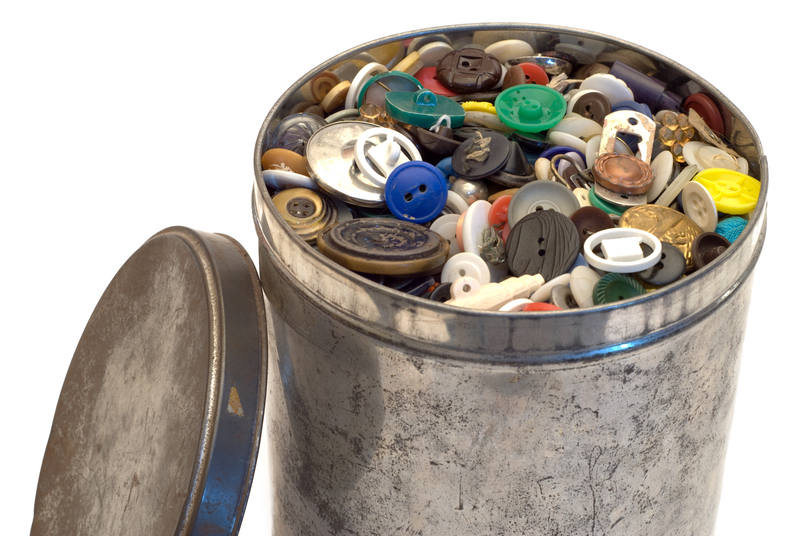Best Practices for Responsibly Disposing of Kitchen Pots
Is your kitchen cabinet overflowing with old, worn-out cookware? Properly disposing of kitchen pots is crucial for both environmental sustainability and your own kitchen safety. If you've wondered how to say goodbye to that dented saucepan or scorched non-stick frypan, this comprehensive guide explores the best practices for responsibly disposing of kitchen pots.
Why Responsible Disposal of Kitchen Pots Is Important
Every year, millions of kitchen pots and pans end up in landfills, contributing to environmental waste. Unlike some household waste, old kitchen pots are often made from metals and coatings that take centuries to decompose. Improper disposal can pollute soil and waterways due to the breakdown of coatings like Teflon or the leaching of metals.
- Metal pollution: Aluminum, copper, and stainless steel can leach into the environment.
- Non-stick coatings: PTFE (Teflon) and other chemicals can contribute to pollution.
- Volume in landfills: Pots and pans are bulky and take up valuable landfill space.
That's why adopting best practices for kitchen pot disposal is essential--not just for decluttering but for creating a more sustainable kitchen and household.

Understanding the Materials in Kitchen Pots
Kitchen pots come in a variety of materials, each with unique recycling and disposal requirements. Understanding what your cookware is made of helps you choose the most sustainable disposal route.
- Stainless Steel: Durable and recyclable, but sometimes has a non-recyclable handle or lid.
- Aluminum: Lightweight and fully recyclable, though check for coatings.
- Copper: Highly valued for recycling, but may be mixed with other metals.
- Cast Iron: Long-lasting and recyclable, often reusable if seasoned.
- Non-stick/PFTE-coated: Trickier to recycle due to chemical coatings.
- Ceramic/Enamel: Can fracture; not always accepted at recycling facilities.
Pro Tip: Identify your pots' materials before disposal. Look for marks or labels underneath the pans or consult the manufacturer's website for details.
Step-by-Step Guide: How to Responsibly Dispose of Old Kitchen Pots
Ready to clear your kitchen of unused cookware? Follow these best practices for responsibly disposing of kitchen pots for minimal environmental impact.
1. Assess Reusability
The greenest option is to reuse or repurpose your kitchen pots before considering disposal. Ask yourself:
- Is the pot truly beyond repair?
- Could it be cleaned, restored, or seasoned (especially for cast iron)?
- Can it serve another purpose in your home, like as a planter, storage bin, or craft item?
If it still functions, consider giving it a new life in your own home or donating it. Otherwise, move on to recycling or safe disposal.
2. Donate or Gift Usable Pots
If your pots and pans are still in decent condition, donating cookware is a responsible option. Many organizations will gratefully accept gently used kitchenware, including:
- Thrift stores and charity shops
- Local shelters and community kitchens
- Friends, family, or social media groups
Be sure to clean and, if possible, label the pots for safe use by recipients. Donating keeps usable items out of waste streams and supports those in need.
3. Consider Repair Services
Many old kitchen pots can be brought back to life with minor repairs and cleaning. Some options to consider:
- Cast iron restoration: Remove rust and re-season to revive for years of use.
- Replace handles or lids: Many replacement parts are available for quality cookware.
- Refinish copper pots: Professional services can re-tin copper for safety.
4. Upcycle and Repurpose
Get creative! Transforming old pots into something new is both fun and sustainable. Here are a few upcycling ideas for old kitchen pots:
- Garden planters: Drill holes in the bottom and use as unique outdoor pots.
- Storage containers: Organize tools, office supplies, or craft materials.
- Decorative displays: Paint and hang them for quirky wall art.
- Bird baths or feeders: Perfect for small gardens and balconies.
Sharing upcycling ideas online or within your community may inspire others to look at waste differently.
5. Recycle Kitchen Pots Properly
When kitchen pots are no longer usable, recycling is a responsible disposal method. However, you must follow specific steps to ensure safe and effective recycling.
- Contact your local recycling center: Policies differ; call ahead or check their website.
- Separate materials: Your pot may have plastic handles, glass lids, or silicone components that must be removed.
- Rinse thoroughly: Clean off any residue to avoid contamination.
- Drop off at scrap metal facilities: Most centers accept ferrous (magnetic) and nonferrous (non-magnetic) metals.
Tip: Some recycling centers won't accept non-stick pans due to coating chemicals. If in doubt, ask if there's a specific collection for non-stick cookware or hazardous waste.
How to Identify Recyclable Kitchen Pots
Check your pots and pans for recycling symbols or numbers, especially if they contain aluminum or stainless steel. If you can't find markings, use a magnet--if it sticks, it's likely steel and recyclable as scrap metal.
- Ferrous metals (magnetic): Often recyclable as scrap metal.
- Nonferrous metals (non-magnetic): Check with recycling centers; most accept these for recycling.
- Coated pans: These may need to be treated as hazardous or landfill-bound, depending on coatings.
Proper identification helps ensure your pots are processed correctly, improving their chances for recycling rather than entering landfill.
6. Hazardous Waste Disposal for Coated Pans
Some non-stick and ceramic-coated cookware may contain materials that municipal recycling won't process. Options for responsible disposal include:
- Contacting your local hazardous waste facility
- Participating in community collection events
- Returning to the manufacturer (some offer takeback or recycling programs)
Never burn or incinerate coated cookware, as this releases toxic fumes.
What Not to Do When Disposing of Kitchen Pots
Avoid these common mistakes that can harm the environment or create safety issues:
- Throwing pots directly in the trash, especially if they contain hazardous coatings
- Abandoning large quantities of cookware at donation sites without checking their policy
- Burning pots or pans to remove coatings
- Breaking ceramic or glass cookware without proper personal protective equipment
FAQ: Kitchen Pot Disposal Best Practices
Can all kitchen pots be recycled?
Most metal pots and pans can be recycled as scrap metal once non-metal parts are removed. However, cookware with non-stick, ceramic, or glass coatings often requires special handling and may not be accepted at every recycling facility. Always check with your local recycler for specific guidance.
How do I dispose of non-stick cookware responsibly?
Non-stick cookware is challenging to recycle due to chemical coatings. Some hazardous waste facilities, community recycling events, or certain manufacturers accept non-stick pans. Never burn or put them in your household recycling bin without pre-approval from your waste provider.
Are there any manufacturers' takeback programs for old pots?
Yes, some eco-conscious brands now offer takeback and recycling programs for their old products. Check with companies like Le Creuset, GreenPan, or local kitchenware retailers to see if they provide circularity initiatives.
Can I toss old pots into the curbside recycling bin?
Usually not. Curbside recycling is typically for smaller items (like cans and bottles) rather than bulky cookware, which can jam processing machinery. Use the scrap metal drop-off at your local recycling center instead.

Tips for Minimizing Kitchen Pot Waste in the Future
The best way to reduce the burden of kitchen pot disposal is to make smarter purchasing and usage choices in the first place:
- Invest in high-quality cookware designed to last decades.
- Choose materials with greater durability and recyclability like stainless steel and cast iron.
- Avoid cheap non-stick pans with short life spans.
- Practice proper maintenance--season and clean pots regularly to maximize their lifespan.
- Repair before replacing--many brands sell spare parts or offer refurbishment services.
Conclusion: Making the Best Choices for Kitchen Pot Disposal
Responsibly disposing of kitchen pots is more than a simple chore--it's a chance to support environmental health, help others, and tidy your own kitchen space thoughtfully. By following these best practices for kitchen pot disposal, you can:
- Minimize landfill waste by recycling or reusing what you can
- Support community needs by donating functional items
- Prevent pollution through safe hazardous material handling
- Foster creativity by upcycling and repurposing old pots in your home or garden
Take the time to research your local options, repair when possible, and encourage others in your community to do the same. Every small action makes a difference!